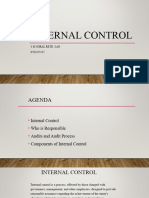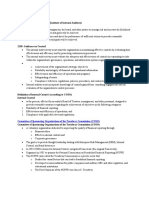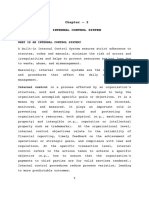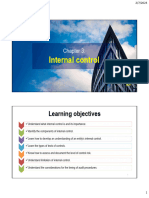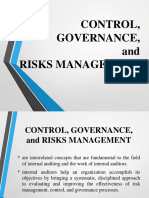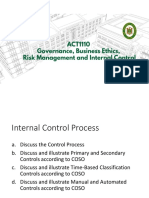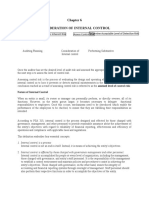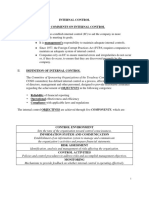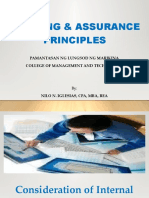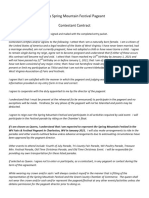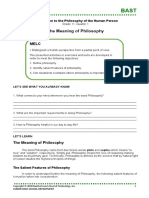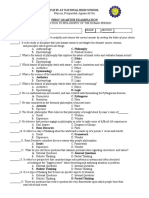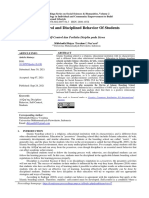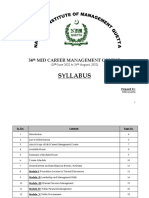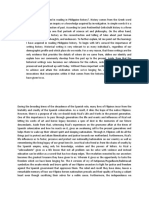Internal control, in the realm of accounting and auditing, is a
structured process implemented by an organization to provide
reasonable assurance regarding the achievement of objectives in
three key areas:
Operational effectiveness and efficiency: Ensuring the
organization's resources are used optimally and goals are met.
Reliable financial reporting: Guaranteeing the accuracy and
integrity of financial information.
Compliance with laws, regulations, and policies: Adhering to
all applicable external and internal rules.
Essentially, internal control is how an organization manages its
resources, monitors its performance, and safeguards against risks
like fraud and errors. It's not just about policies and procedures; it
involves the people within the organization and their commitment to
these controls.
Think of it like this: imagine a kitchen. Internal controls are like
having clear recipes (policies), measuring ingredients accurately
(procedures), having different people responsible for chopping
vegetables and cooking (segregation of duties), and regularly
tasting the food (monitoring) to ensure the final dish is right.
Key Components of Internal Control
The Committee of Sponsoring Organizations of the Treadway
Commission (COSO) framework, a widely accepted standard,
outlines five interconnected components of internal control:
1. Control Environment: This sets the ethical tone of the
organization and influences the control consciousness of its people.
It's the foundation for all other components and includes factors like
integrity, ethical values, and management's operating style.
2. Risk Assessment: This involves identifying and analyzing relevant
risks that could prevent the achievement of the organization's
objectives. It forms the basis for determining how these risks should
be managed.
3. Control Activities: These are the specific actions, policies, and
procedures established to ensure management's directives are
carried out. They help mitigate risks and can be preventive
(stopping errors before they occur) or detective (identifying errors
after they happen). Examples include approvals, authorizations,
reconciliations, and segregation of duties.
4. Information and Communication: This involves the systems and
processes that support the identification, capture, and
communication of relevant information in a timely manner. Effective
communication ensures that everyone understands their roles and
responsibilities within the internal control system.
5. Monitoring Activities: These are ongoing evaluations, separate
evaluations, or a combination of both used to assess whether the
internal control system is functioning effectively over time.
1
� Examples of Internal Controls
Internal controls can be seen in various everyday business
activities:
Segregation of Duties: Dividing responsibilities so that no single
person has control over all aspects of a transaction (e.g., the person
who approves invoices should not also process payments).
Authorization and Approvals: Requiring management approval
for certain transactions or activities.
Reconciliations: Comparing different sets of records to verify
accuracy (e.g., bank reconciliations).
Physical Controls: Securing assets physically, such as locks,
security cameras, and restricted access.
Policies and Procedures: Documented guidelines for carrying out
tasks consistently.
Information Processing Controls: Checks within IT systems to
ensure data accuracy and completeness.
Performance Reviews: Management's review of financial and
operational reports.
Types of Internal Controls
Internal controls are often categorized as:
Preventive Controls: Designed to prevent errors or fraud from
occurring in the first place (e.g., passwords, segregation of duties).
Detective Controls: Designed to detect errors or fraud that have
already occurred (e.g., reconciliations, audits).
Corrective Controls: Actions taken to fix errors or irregularities
that have been identified (e.g., revising procedures after an error is
found).
Importance of Internal Control
Effective internal controls are crucial for several reasons:
Risk Mitigation: They help identify and minimize potential risks
that could harm the organization.
Fraud Prevention and Detection: They make it more difficult for
fraud to occur and easier to detect if it does.
Asset Protection: They safeguard the organization's resources
from theft, misuse, and damage.
Financial Reporting Reliability: They ensure the accuracy and
trustworthiness of financial information used for decision-making.
Operational Efficiency: They can streamline processes and reduce
inefficiencies.
Compliance with Laws and Regulations: They help the
organization adhere to legal and regulatory requirements.
Accountability: They clarify roles and responsibilities, making it
easier to hold individuals accountable.
Stakeholder Confidence: They provide assurance to investors,
creditors, and other stakeholders that the organization is well-
managed.
2
�In conclusion, internal control is a fundamental aspect of good
governance and management. It provides the framework for an
organization to operate ethically, efficiently, and in compliance with
relevant rules, ultimately contributing to its long-term success and
sustainability.

